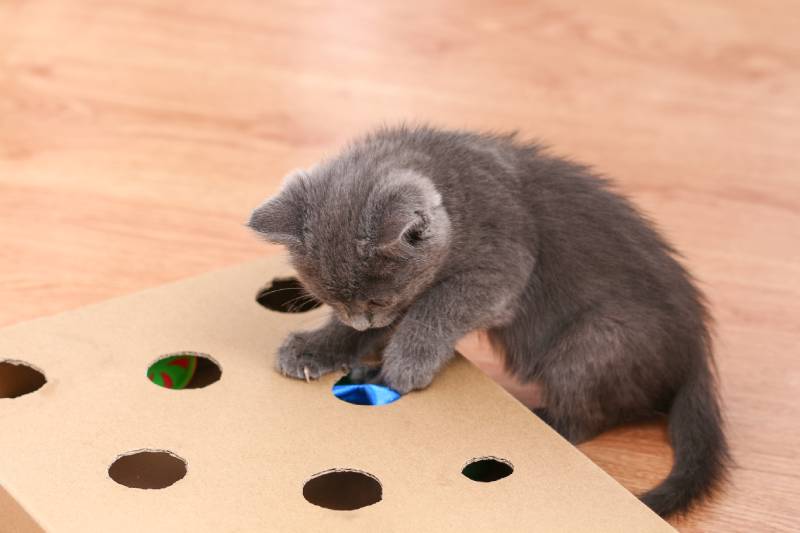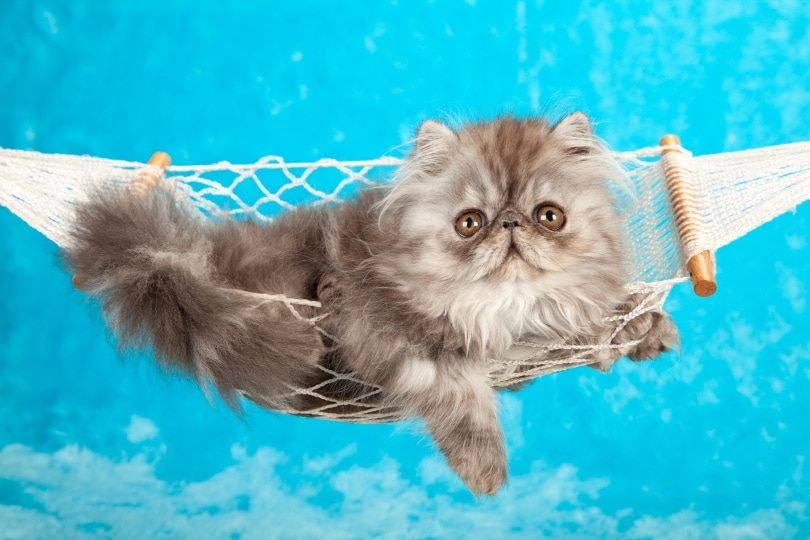Norwegian Forest Cat vs Domestic Long Hair: The Differences (With Pictures)
By Luxifa Le
Updated on
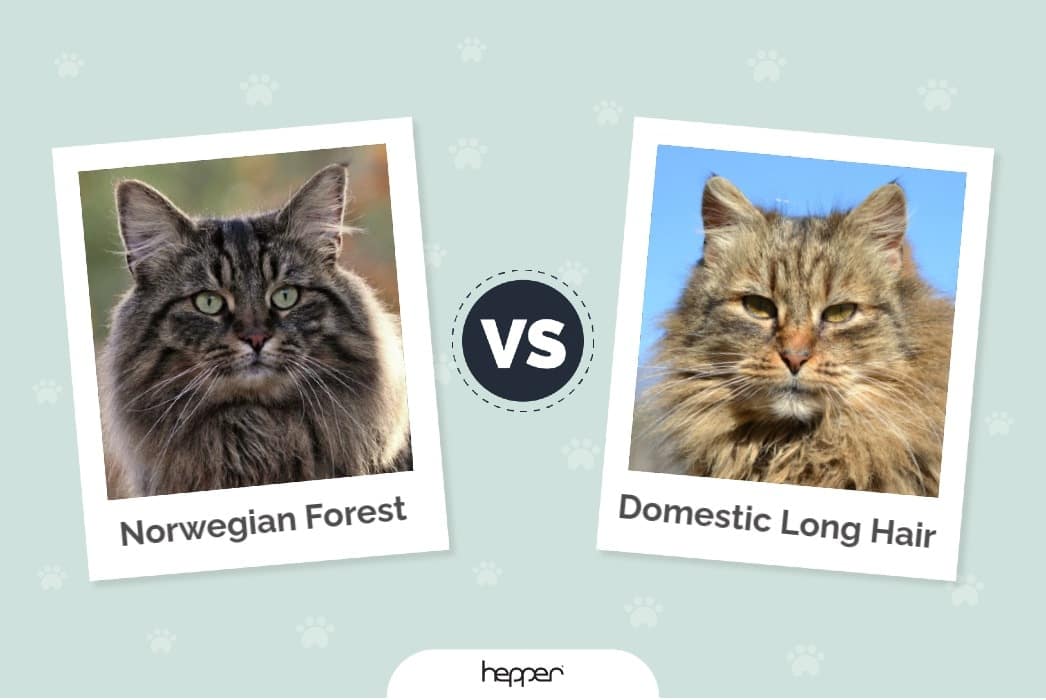
Click to Skip Ahead
Visual Differences
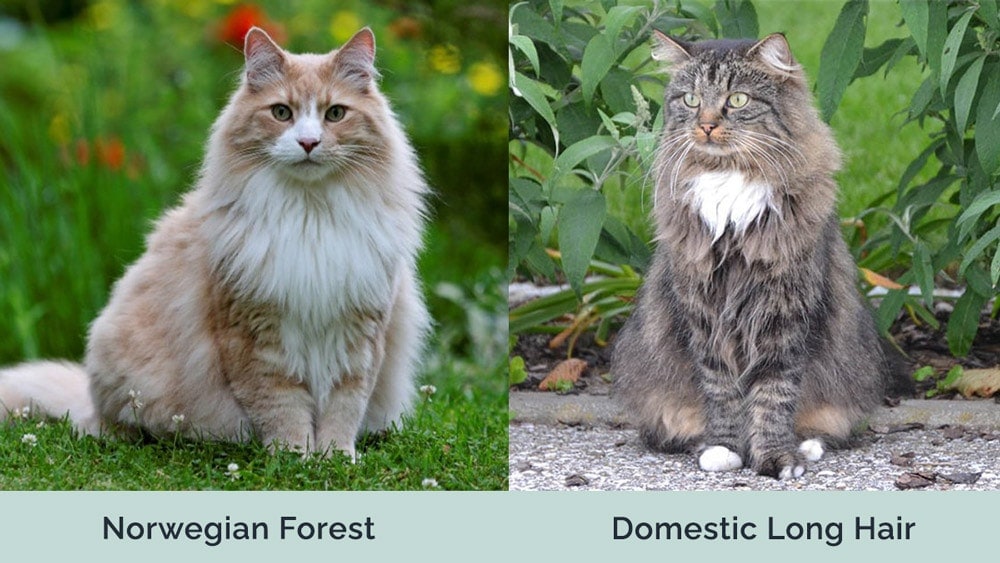
At a Glance
- Origin: Northern Europe
- Size: Large
- Lifespan: 12–16 years
- Domesticated?: Yes
- Origin: Asia
- Size: Varies
- Lifespan: 12–16 years
- Domesticated?: Yes
Norwegian Forest Cat Overview
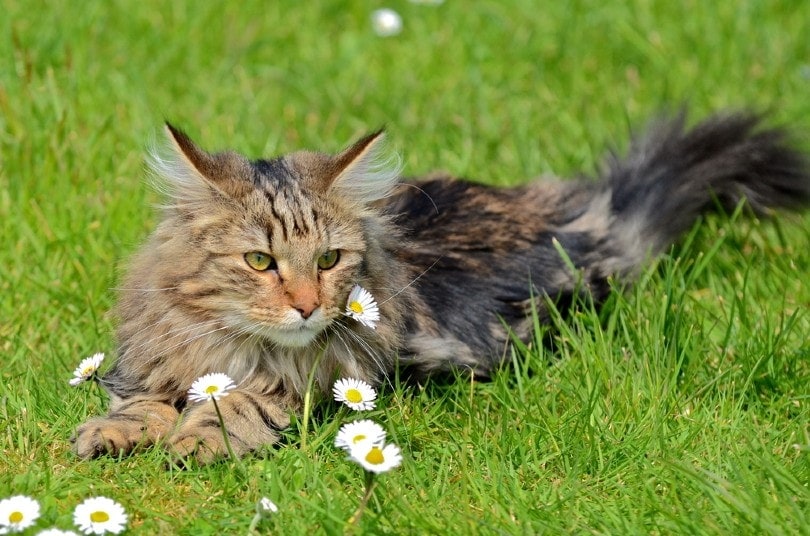
Characteristics & Appearance
The most striking feature of the Norwegian Forest Cat is its size. To say that Norwegian Forest Cats are big would be an understatement! A Norwegian Forest can easily clock in at double the weight of the average cat without even being a little bit fat! The Norwegian Forest Cat is a powerful, strong cat, and those huge muscles have weight! They can easily weigh 10–20 pounds and be in perfect health.
Norwegian Forest Cats also have a water-wicking coat. They were bred to thrive in cold temperatures and hunt in the snow. So, their fur repels water rather than absorbing it like most other cats.
Uses
Norwegian Forest Cats were bred as mousers for Viking ships. Because they needed to hunt in damp, cold conditions, they were born with thick, water-repelling coats that allowed them to thrive on land or at sea.
Domestic Longhair Overview

Characteristics & Appearance
The Domestic Longhair is a cat with less clear-cut origins. The original lineage can be traced back to Asia, but any longhaired cat is considered a Domestic Longhair—including Norwegian Forest Cats.
Domestic Longhairs vary significantly in appearance since they are often mixed-breed cats. In contrast, the Norwegian Forest Cat has a very distinct appearance and an ongoing breed standard amongst show cats.
Uses
Domestic Longhairs are usually companion animals, though some people may use them as mousers in their homes or farms. Their long fur is prone to get tangled and matted if not maintained properly, which means that their uses as working animals are limited.
What Are the Differences Between Norwegian Forest Cat & Domestic Long Hair?
Norwegian Forest Cats and Domestic Longhairs are like squares and rectangles. All Norwegian Forest Cats are Domestic Longhairs, but not all Domestic Longhairs are Norwegian Forest Cats. While you may find Domestic Longhairs with significant traits coming from Norwegian Forest Cat lineage, the Norwegian Forest Cat has a particular breeding standard that must be followed to be considered part of that breed by the International Cat Association.
If your cat has Norwegian Forest Cat heritage, it will likely be larger and more robust than the average cat. Norwegian Forest Cats are prized hunting cats, and you will see your cat’s attention to detail, and prey drives young.
Which Breed Is Right for You?
What you intend for your cat to do and your lifestyle will determine whether or not you should have a Norwegian Forest Cat. Big cats eat a lot of food and won’t be satiated with the smaller amounts of food you usually give to a cat.
Additionally, Norwegian Forest Cats have strong prey and hunting drives. If you have small animals, they may be in danger from a Norwegian Forest Cat. However, if you are looking for a cat to act as a mouser on a farm or just in a house, a Norwegian Forest Cat will be a great option.
Conclusion
Norwegian Forest Cats have taken the world of cats by storm since their revival in the late 20th century. They are the most popular cat breed in Norway and Sweden and the fifth most popular cat breed in France. Their introduction to America has brought a lot of interest from cat fanciers who love their sleek coats and adorable faces. But that doesn’t mean they’re for everyone! Consider carefully whether these adept hunters will fit into your lifestyle before you purchase one!
Feature Image Credit: Left: Elisa-Putti, Shutterstock | Right: Sandra_M_H, Pixabay



